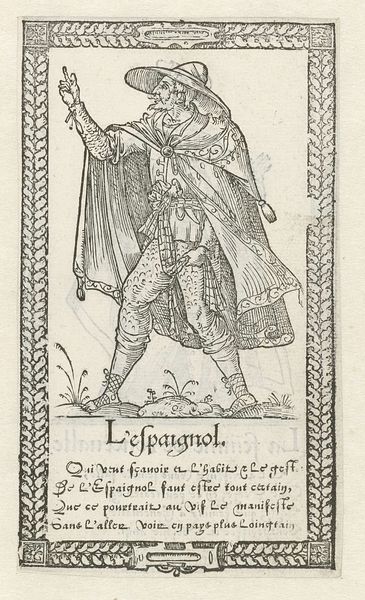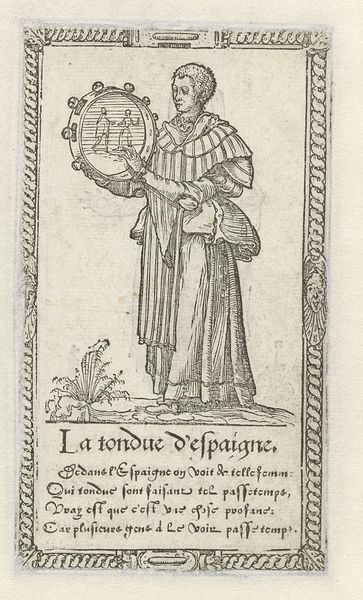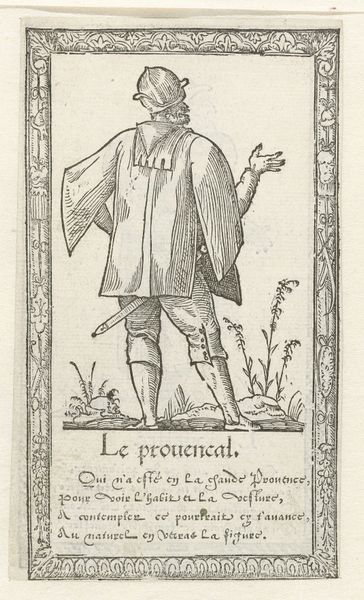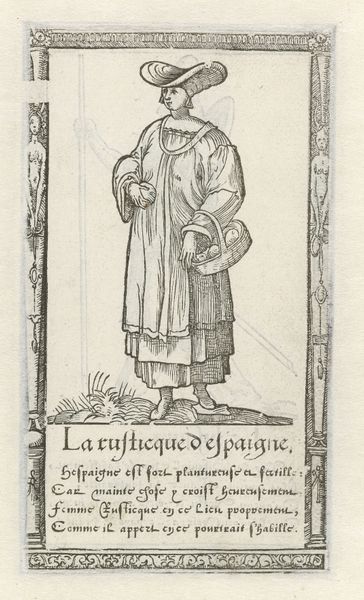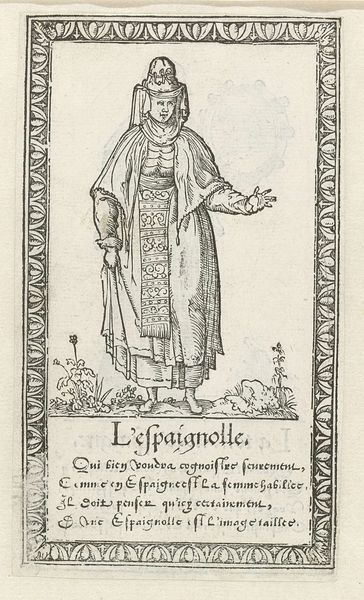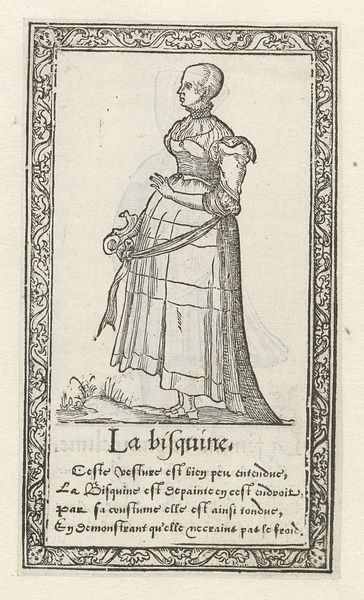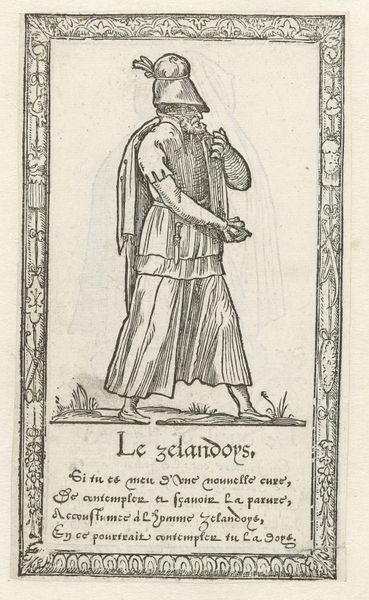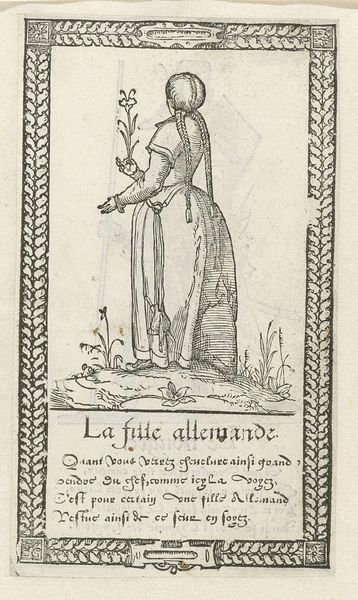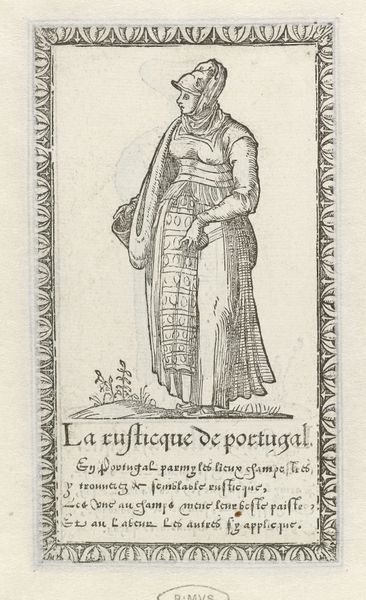
print, engraving
#
portrait
# print
#
old engraving style
#
figuration
#
11_renaissance
#
line
#
genre-painting
#
northern-renaissance
#
engraving
Dimensions: height 145 mm, width 85 mm
Copyright: Rijks Museum: Open Domain
Curator: This is "Vrouw van het Spaanse platteland," or "Woman of the Spanish Countryside," an engraving by François Desprez, dating back to 1562. Editor: Immediately striking, isn’t it? The linear precision, the stark contrast...there's a definite formality here. It's rendered with incredible detail, the line work really defines the volumes. Curator: It’s interesting to consider this print within the context of its time. Northern Renaissance art often depicted the lives of everyday people. We're given a glimpse into the life and attire of a working woman in 16th century Spain, likely through the lens of a French artist. The French text beneath her further underlines that this is an interpretation, and arguably a construction, of Spanish identity for a foreign audience. Editor: True. Visually, I’m drawn to the repeating patterns; the braided border around the image itself mirrors the textured weave of the woman's headdress. The folds in her sleeves, her skirt, even the tufts of grass nearby all display rhythmic, intentional marks. There’s this sense of order despite the seemingly ‘rustic’ subject matter. Curator: I'd push back slightly on the notion of order overriding the subject. Desprez might be deliberately employing these formal strategies to both frame, and perhaps subtly comment on, social roles and cultural identity. She is firmly placed as being ‘other,’ ‘rural’ and ‘Spanish,’ for the viewers pleasure, even consumption. Editor: Point taken. Though I’d still say that the overall composition has this quality which suggests a degree of remove. The use of line—in all its precision and meticulousness—allows us to understand depth and texture; the artist's rendering encourages aesthetic contemplation beyond mere documentary. Curator: Precisely. And thinking of that act of translation between cultures and experiences, this rendering of Spanish ‘rurality’ perhaps perpetuates exoticising perspectives prevalent at the time. The emphasis on “rustic” and “Spanish”, especially from a French viewpoint, reveals the era's complex understanding, and sometimes misunderstanding, of its neighbors. Editor: Indeed, Desprez’s deliberate strokes invites deeper readings, and the conversation around form brings additional dimension to issues of representation. Curator: The engraving prompts consideration beyond just the visual elements of art, and lets us bring important, urgent questions to its doorstep.
Comments
No comments
Be the first to comment and join the conversation on the ultimate creative platform.

